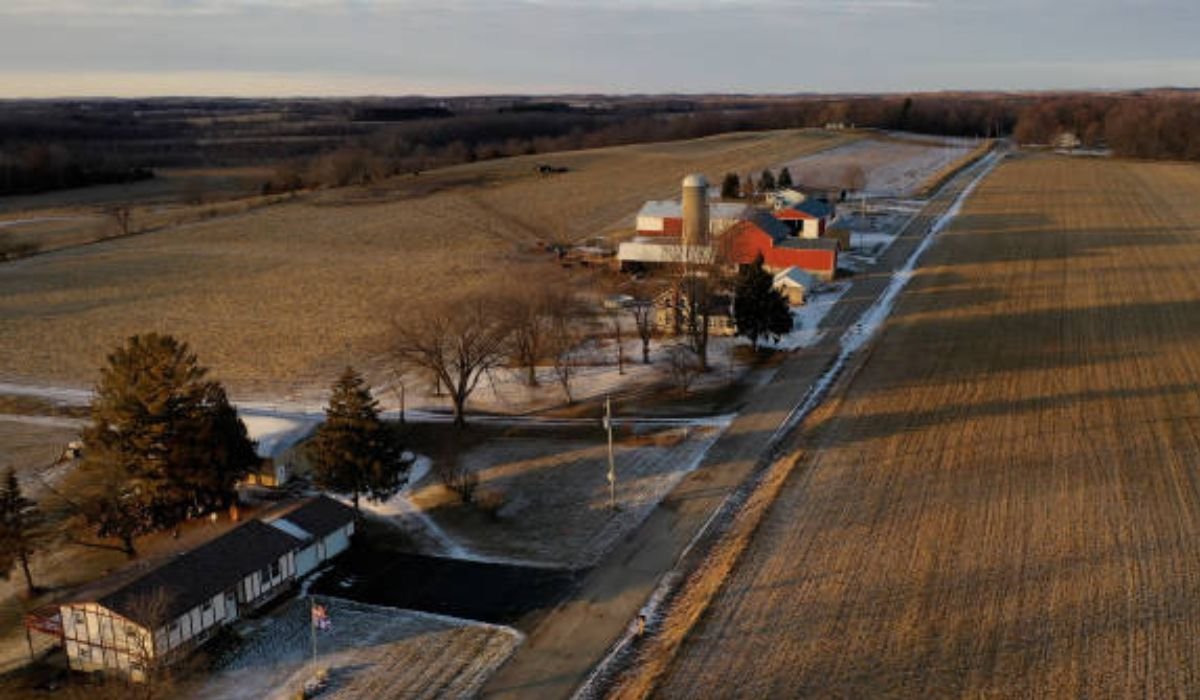It’s easy to assume the modern American farm is fading away, replaced by massive operations that look more like factories than family enterprises. But tucked behind those cornfields and gravel roads are small farms proving a quiet truth: rural America isn’t dying. It’s adapting. And the people steering tractors at dawn are as resourceful, innovative, and grounded as they’ve ever been.
The Modern Small Farm Reboot
You’d think after decades of economic pressure, unpredictable weather, and rising equipment costs, small farms would’ve given up the ghost. But they haven’t. They’ve evolved. Today’s small farmers are diversifying faster than corporate boardrooms: mixing livestock, produce, and niche crops like lavender or mushrooms to keep income steady. Many have discovered that small-scale farming actually offers flexibility the industrial giants don’t have. They can pivot mid-season if the market changes. They can sell directly to customers instead of relying on fickle distributors. And they can cultivate trust the big guys lost long ago.
Drive through towns across the Midwest or South, and you’ll find family farms pulling double duty as farmstands, bed-and-breakfasts, or weekend event venues. These ventures bring visitors, energy, and money to towns that used to empty out after high school graduation. The same families who once debated whether to leave now find reasons to stay.
Resilience Runs in the Soil
There’s a rhythm to rural resilience that city life can’t imitate. Farmers have been through droughts, floods, and decades when commodity prices barely covered seed costs. Yet somehow, they hang on. Maybe it’s pride. Maybe it’s faith. Maybe it’s just that nobody else knows how to fix the old baler quite like they do. Whatever it is, that persistence keeps communities alive when industries pull out and main streets go quiet.
You see it at the co-ops, the local diners, and yes, even at the regional chains that have become unofficial gathering spots. Walk into a store like Tractor Supply on a Saturday morning, and you’ll hear snippets of local life between the aisles of feed and fencing. A retired teacher picking up seed trays, a teen learning about feed supplements for a new calf, and someone who’s been working at Tractor Supply for years swapping weather notes with a customer. These small interactions might seem ordinary, but they’re the glue that holds rural America together.
ALSO READ: Resources for Opening Your Own Boutique Grocery Store
The Everyday Science of Survival
Beyond the camaraderie and hard work lies a constant stream of problem-solving that would put any lab to shame. Farmers deal with everything from soil chemistry to animal health on a daily basis. When a cow comes down with pink eye, a common issue known as pink eye in cattle, it’s not just about treating an infection. It’s about protecting the herd, preventing loss, and keeping operations stable. A small farm doesn’t have the luxury of writing off a few animals as collateral damage. Every head counts, every crop matters, and every decision has a ripple effect.
What’s remarkable is how these farmers balance old-school wisdom with modern veterinary science and technology. They might consult a local large-animal vet, but they also keep an eye on new research through university extensions or online forums.
Community Is the True Crop
Farming has always been about community. The help-your-neighbor kind. The kind where no one asks what you do for a living because everyone already knows, and they know how hard it is. This collective mindset is what keeps small towns alive even as younger generations drift to cities.
Young families, weary of screen life and expensive rent, are moving back to the countryside. They’re bringing remote jobs with them, reconnecting with land that might’ve been in the family for generations. It’s not nostalgia—it’s pragmatism. The farm provides stability and purpose in a world that often feels out of control.
Small towns that once worried about empty classrooms are seeing kids again. County fairs are getting crowded. Local 4-H clubs are back to full rosters. There’s still struggle, sure, but there’s also a slow hum of revival that no data chart fully captures.
The New Meaning of Success
Success in rural America doesn’t look like it used to. It’s not just about acreage or output anymore. It’s about self-sufficiency and sustainability. It’s about families learning to do more with less, to farm smarter, and to value quality over quantity. A farmer selling pasture-raised beef at a Saturday market might earn less than a corporate salary, but they’ll tell you they’ve gained something better: time, freedom, and a life that actually feels lived.
Small farms are using solar panels, drone monitoring, and online marketplaces to cut waste and expand reach. Some of them run community-supported agriculture programs where customers prepay for weekly produce boxes. That steady income helps smooth over the unpredictability of weather and pests. Others use social media to show the behind-the-scenes of planting, harvesting, and the real grind of keeping a farm running.
Holding On To The Heartland
The story unfolding across America’s rural landscape is one of endurance. These are people who adapt faster than they complain, who see value where others see risk, and who measure success in something deeper than dollars. When they look out over their fields at sunrise, they’re not just seeing crops, they’re seeing continuity.
Rural America’s future won’t be written by policy or profit margins. It’ll be written by the families who wake up early, fix what’s broken, and plant again even when the odds look bad. They’re not romanticizing the past—they’re building something new from the roots up. And in that grounded, stubborn hope, you’ll find the truest pulse of the country.
YOU MAY ALSO LIKE: The Tiny Factory Revolutionizing Your Daily Health Ritual











